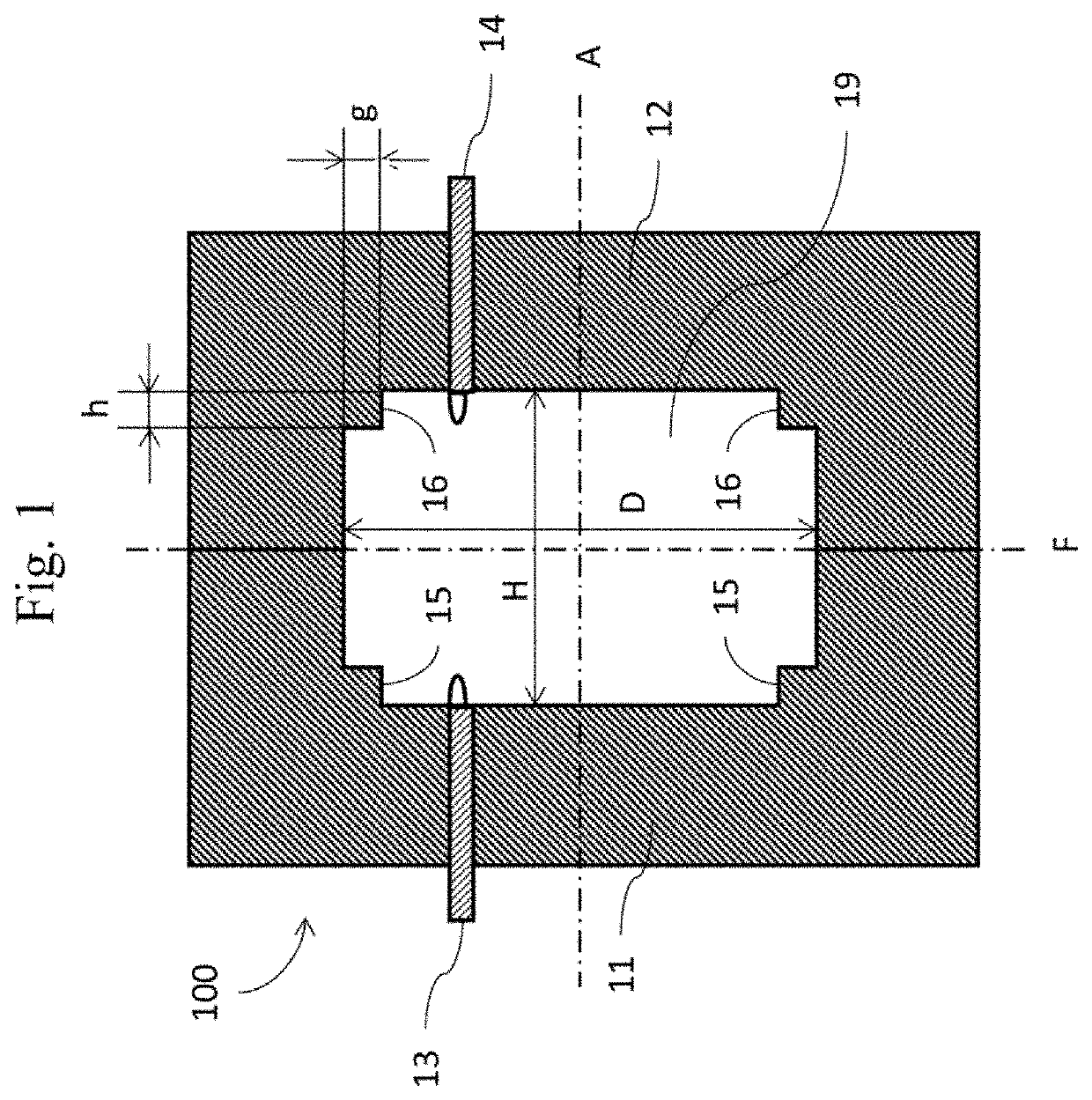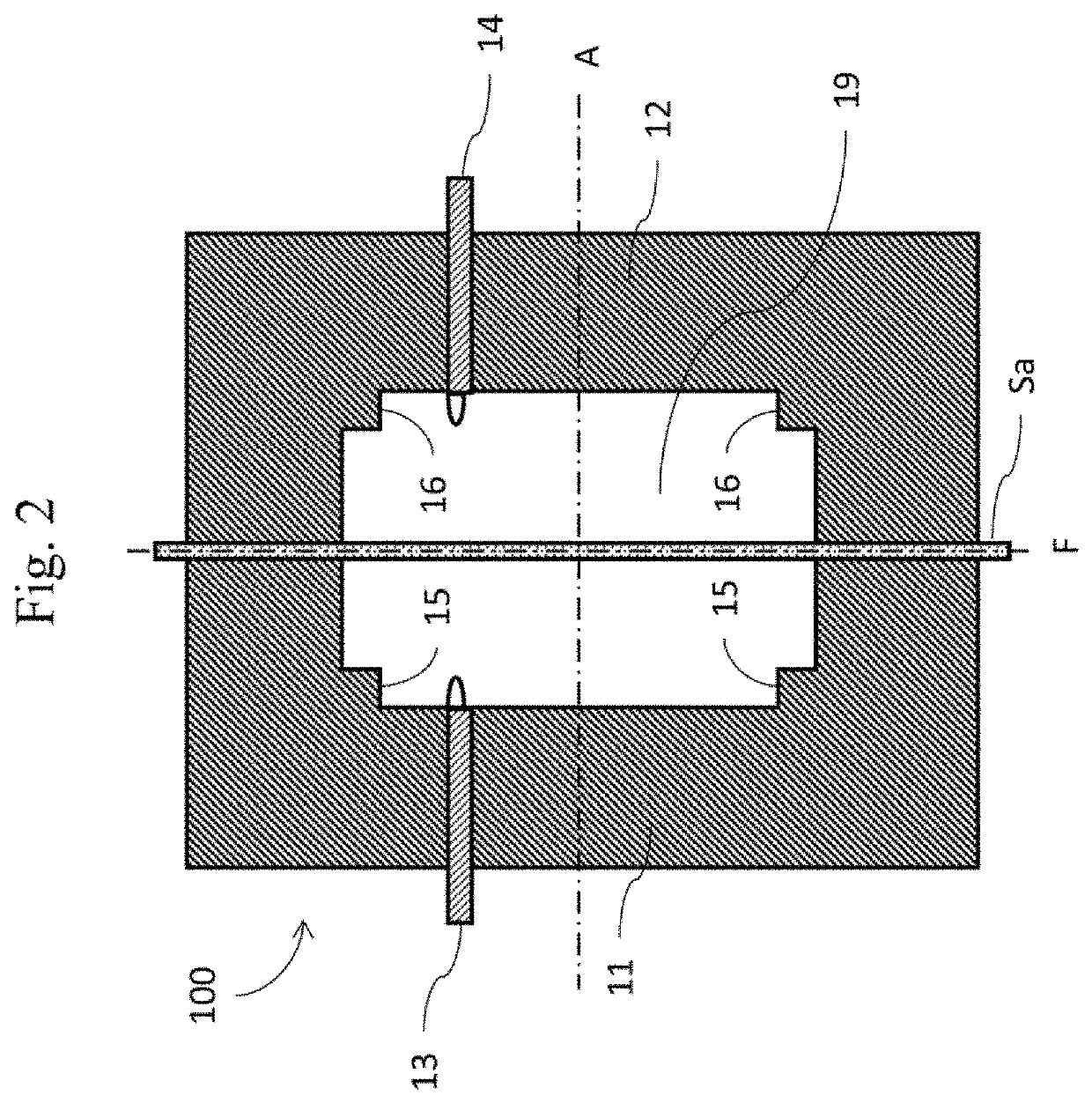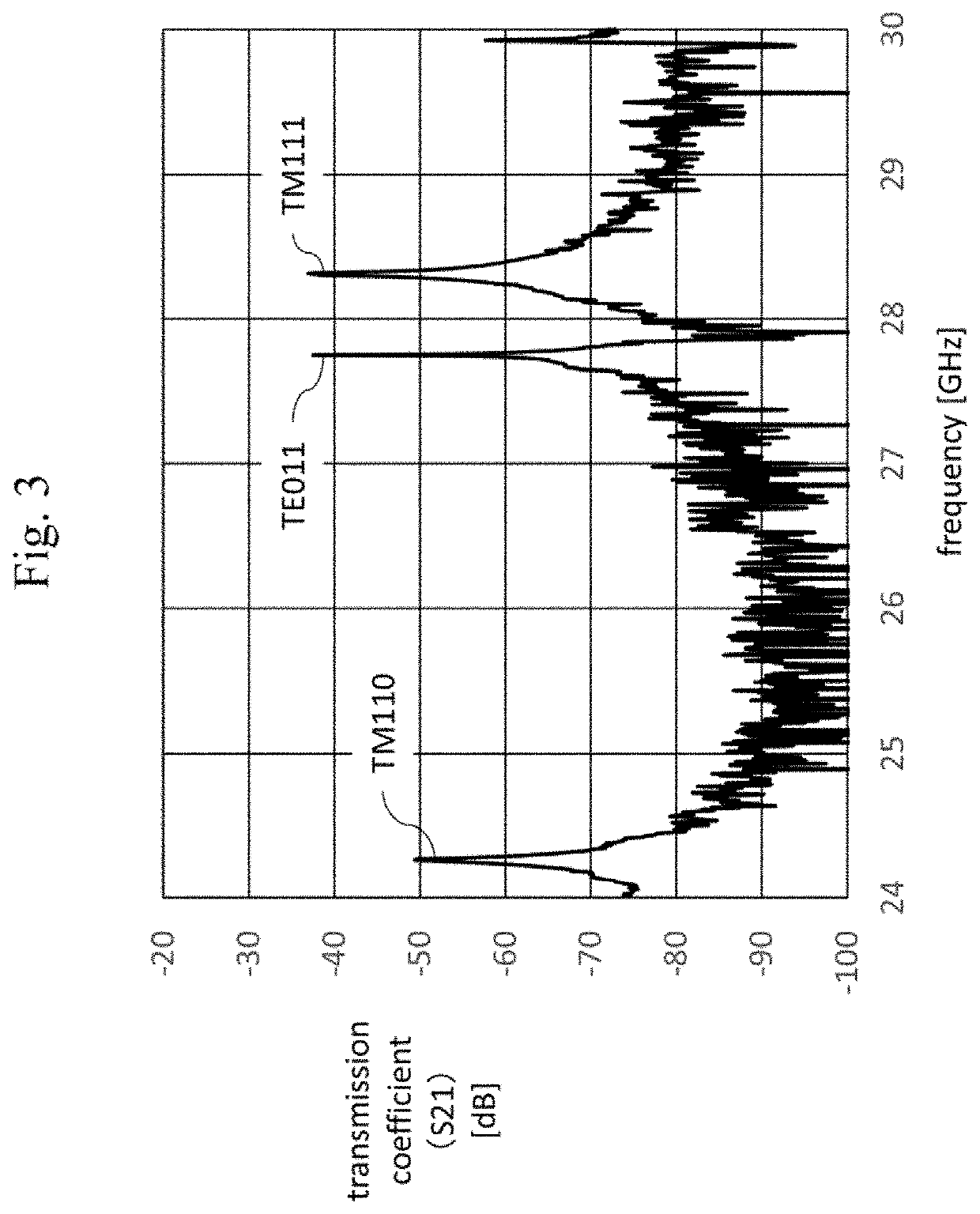Split cylinder resonator and method of calculating permittivity
a technology of resonators and cylinders, applied in waveguides, waveguide type devices, instruments, etc., can solve problems such as inability to accurately measure resonance characteristics
- Summary
- Abstract
- Description
- Claims
- Application Information
AI Technical Summary
Benefits of technology
Problems solved by technology
Method used
Image
Examples
embodiments
[0045]FIG. 1 is a schematic diagram showing a cross-section of a split cylinder resonator (without measurement sample). FIG. 2 is a schematic diagram showing a cross-section of the split cylinder resonator in which the measurement sample is inserted. A split cylinder resonator 100 has two conductive bodies 11, 12 and two coaxial cables 13, 14. The two conductive bodies 11, 12 have the bottomed cavities which have the substantially same shape with each other. The split cylinder resonator 100 is formed by combining the conductive bodies 11, 12 so that the bottomed cavities face with each other. The bottomed cavities are formed in a cylindrical (circular columnar) shape having the side surface and the bottom surface so that opening portion is located opposite to the bottom surface. A cavity 19 (integrated cavity) having a cylindrical shape is formed by combining the bottomed cavity of the conductive body 11 and the bottomed cavity of the conductive body 12. Protruded portions 15, 16 ar...
PUM
 Login to View More
Login to View More Abstract
Description
Claims
Application Information
 Login to View More
Login to View More - R&D
- Intellectual Property
- Life Sciences
- Materials
- Tech Scout
- Unparalleled Data Quality
- Higher Quality Content
- 60% Fewer Hallucinations
Browse by: Latest US Patents, China's latest patents, Technical Efficacy Thesaurus, Application Domain, Technology Topic, Popular Technical Reports.
© 2025 PatSnap. All rights reserved.Legal|Privacy policy|Modern Slavery Act Transparency Statement|Sitemap|About US| Contact US: help@patsnap.com



